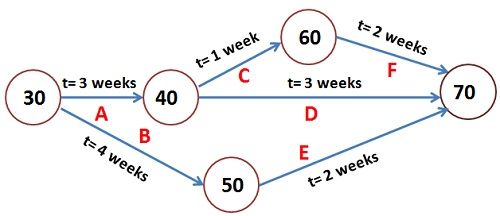Definition: The PERT (Program Evaluation Review Technique) is a technique used in the planning and controlling of large scale projects. Simply, PERT is the statistical tool used to represent the set of activities (task), required to be performed for the completion of the project.
PERT is a planning and controlling tool for the management that provides the complete roadmap of activities involved in the completion of a project, along with the estimated time required for the completion of each task and the minimum time needed for the whole project to get completed.
PERT is used majorly for analyzing the project scheduling problems, wherein the time needed for the completion of each task and the whole project as a whole is uncertain. Thus, PERT lays emphasis on the uncertainty of completion time of the activities involved in the project. It is probabilistic in nature and hence is much used in the research and development projects.
A PERT Chart is created to represent a set of activities along with the estimated time (generally, in weeks) for its completion on a graph. It shows that for a completion of activities in the series the predecessor activities must be completed before beginning a new activity.
The activity is a task, and the event is the milestone. In the chart, the activity and task are represented by arcs and nodes as shown in the figure below:
In the graph, the milestones are numbered so that it is easily identifiable that the last node has a higher number than the beginning node. The activities are shown by the letters along with the expected time required for the completion of each activity. In this way, the management plots a graph and plan about the activities involved in a project and estimate the time needed for its completion.


Chandramanipg Chandramanipg says
Dear sir how to apply this technique in making electroplating plant